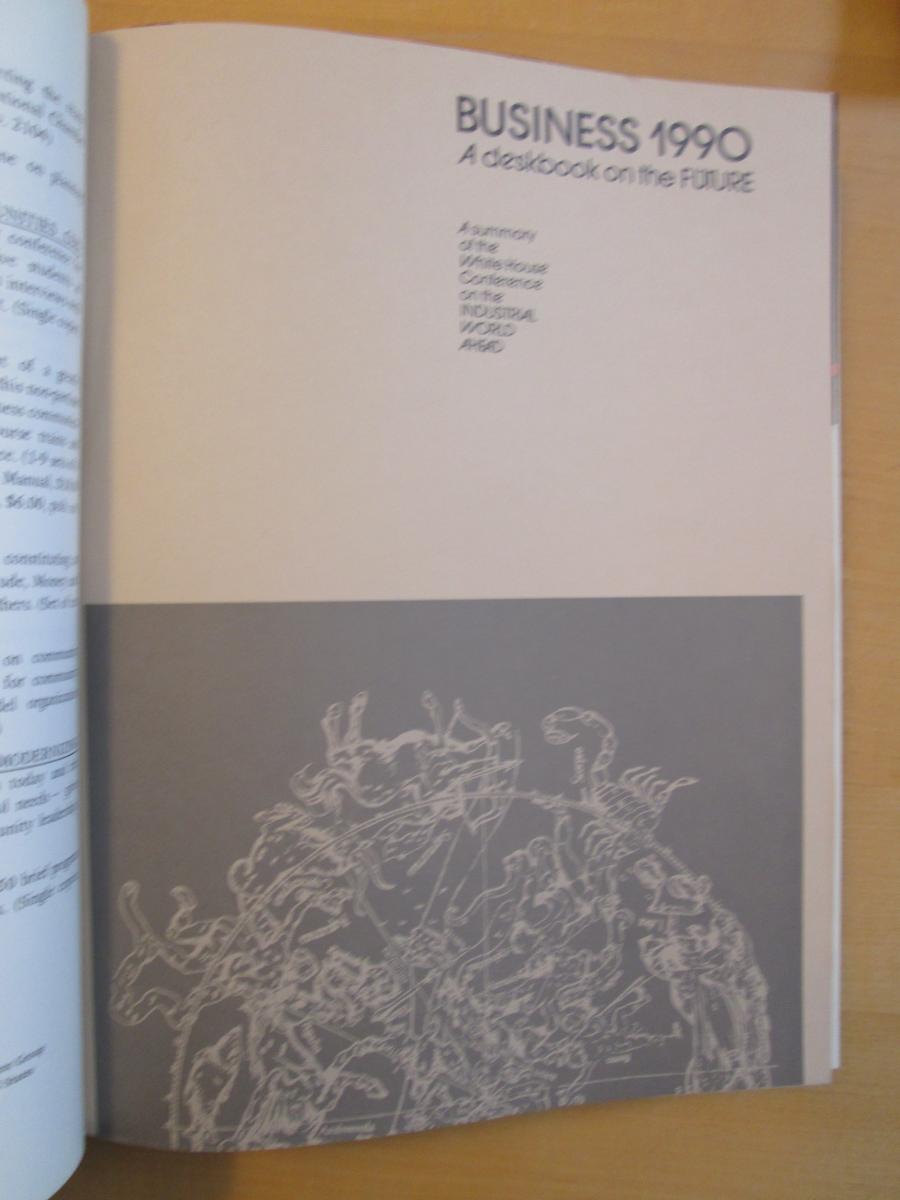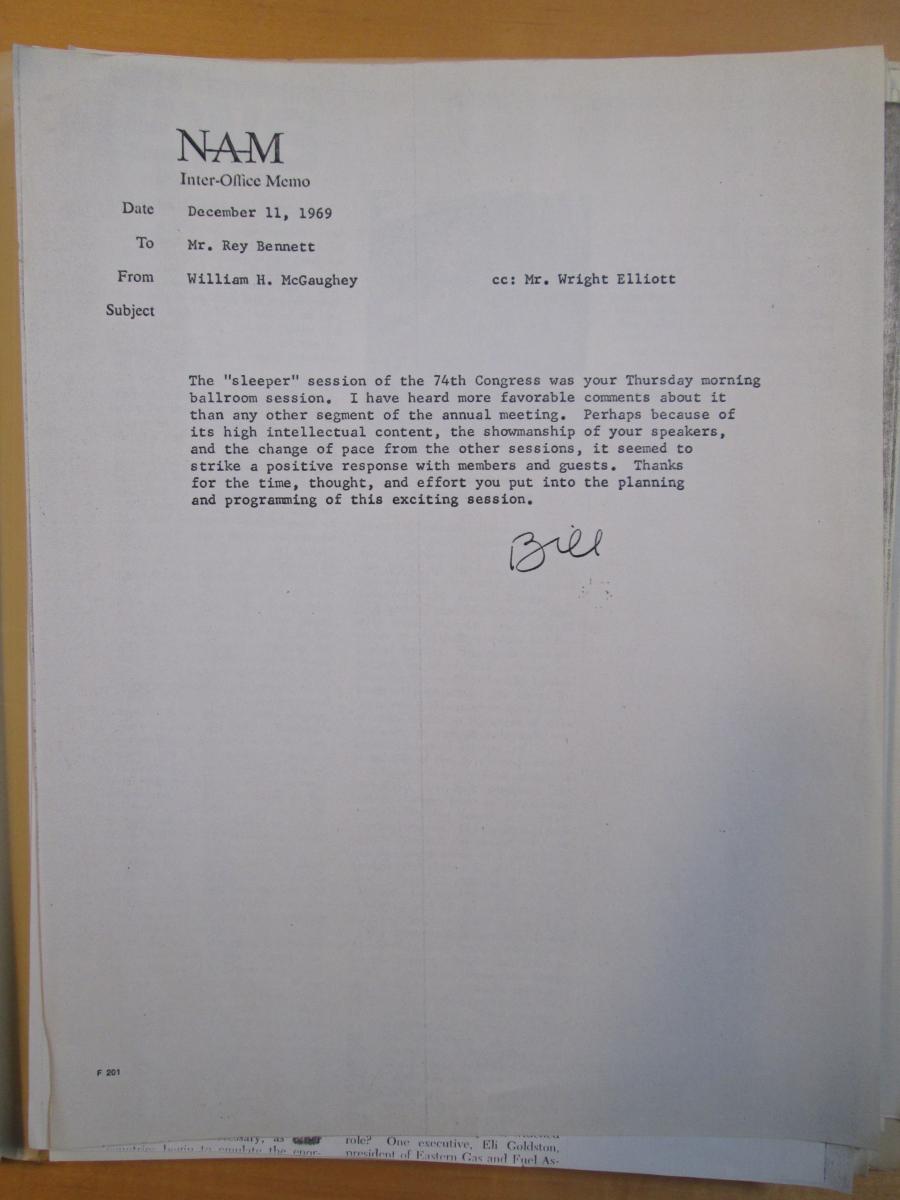With growing prosperity at home and a lack of competition abroad, U.S. corporations seemed to enter a golden age after WWII. But by the 1970s, all that appeared to be changing. At home, the environmental movement and anti-corporate protesters signaled the decline of public faith in American business. Abroad, Japanese manufacturers were proving themselves to be tough competitors. What’s more, inflation seemed impossible to stop. It was against this gloomy backdrop that Richard Nixon’s White House sponsored a conference titled “The Industrial World Ahead: Business Looks at 1990” in 1972 in an attempt to discern what the future held for American business. The conference itself serves as a jumping off point for my larger research project exploring the ways in which American business managers thought about the future during the 1970s and 1980s.
That White House conference was also what brought me to Hagley for a week in January, through one of the library’s Exploratory Research Grants. The U.S. Chamber of Commerce had helped plan the conference, and I hoped that the organization’s records, which are at Hagley, would tell me more about it. I soon discovered that the Chamber’s involvement in the conference was extensive. However, one document, a small book titled Business 1990: A Deskbook on the Future the Chamber of Commerce published, stands out.

The publication, which is a conference summary that includes excerpts from keynote speeches, suggests the Chamber’s leadership thought the White House conference was very important. The book’s chapters, “From Economic to Social Concerns,” “From an Industrial to Post-Industrial Era,” “From the Technological to Post-Technological Age,” and “From a Nationalized to Internationalized Milieu” reveal how conference participants were convinced that the future was going to mean big changes for American business.
During my week at Hagley, I also learned that American business executives and lobbyists had been keenly interested in learning more about the future even before the conference in 1972. In fact, a group of the Chamber’s leadership, called the Council on Trends and Perspectives, had been thinking about the future of business for some time. As the Chamber’s Executive Vice President, Arch Booth wrote, the Council on Trends and Perspectives was “one of the earliest efforts by a business group to organize for the future in an inter-disciplinary way.”
The Chamber’s members were not alone in thinking about the future. For example, in 1969, the National Association of Manufacturers invited the futurist Herman Kahn to participate in the 74th Congress of American Industry. Kahn was one of several speakers at the event, but as one member of NAM wrote to another, he had “heard more favorable comments” about Kahn’s talk “than any other segment of the annual meeting.”

While it is still too early in the research process to draw big conclusions, such documents hint at the importance some in the business community assigned to “the future” during the final decades of the twentieth century.
Gavin Benke, Lecturer, CAS Writing Program, Boston University. Author: Risk and Ruin: Enron and the Culture of American Capitalism. Twitter: @GavinBenke
